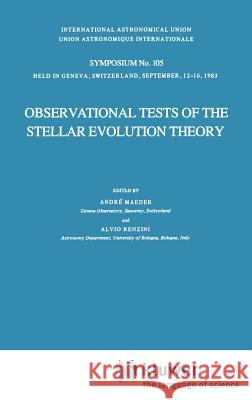Observational Tests of the Stellar Evolution Theory » książka
Observational Tests of the Stellar Evolution Theory
ISBN-13: 9789027717740 / Angielski / Twarda / 1984 / 590 str.
"If simple perfect laws uniquely rule the universe, should not pure thought be capable of uncovering this perfect set of laws without having to lean on the crutches of tediously assembled observations? True, the laws to be discovered may be perfect, but the human brain is not. Left on its own, it is prone to stray, as many past examples sadly prove. In fact, we have missed few chances to err until new data freshly gleaned from nature set us right again for the next steps. Thus pillars rather than crutches are the observations on which we base our theories; and for the theory of stellar evolution these pillars must be there before we can get far on the right track. " These words written by Martin Schwarzschi1d in his famous book en- titled "Structure and Evolution of the Stars"(1958) remind us how necessary and fruitful is the interplay of stellar evolution theory and observations. Clearly, observations are the great censor by their possibility of confirming or contradicting theoretical constructions. In addition, they have a driving role: new and sometimes unexpected facts may give rise to progressive ideas and stimulate further theoretical developments. In turn, theory, in its major role of sifting out and placing the facts in a logical sequence based on physical laws, must also be predictive and indicate new and pertinent observations to be undertaken.











